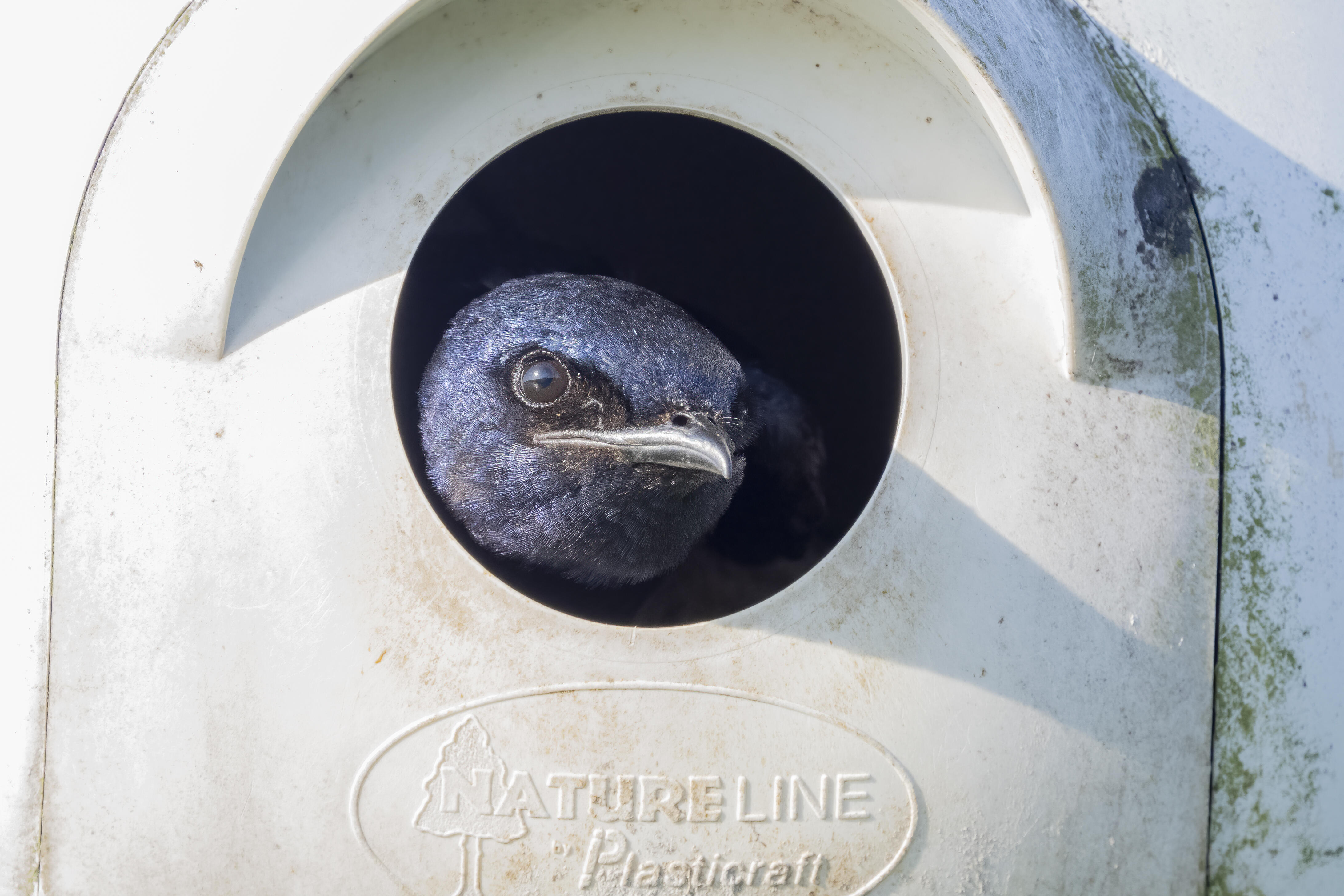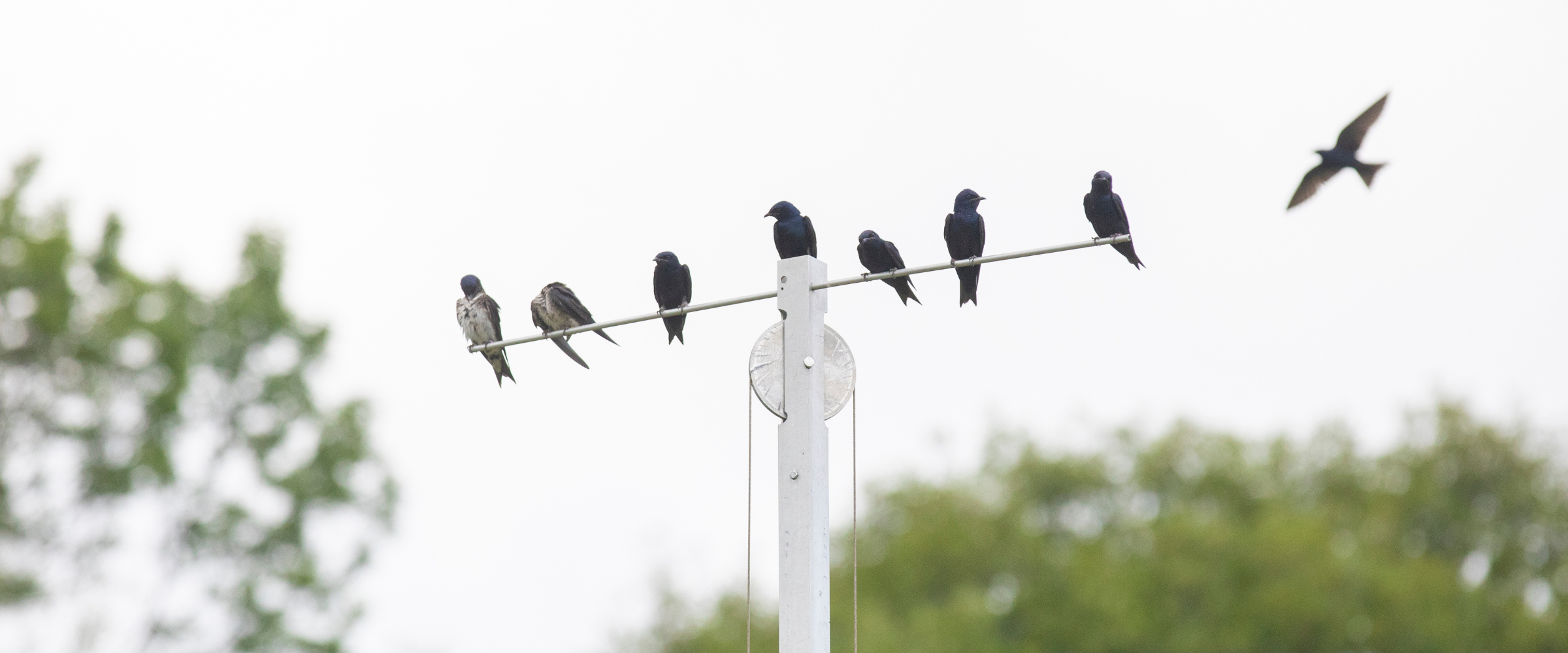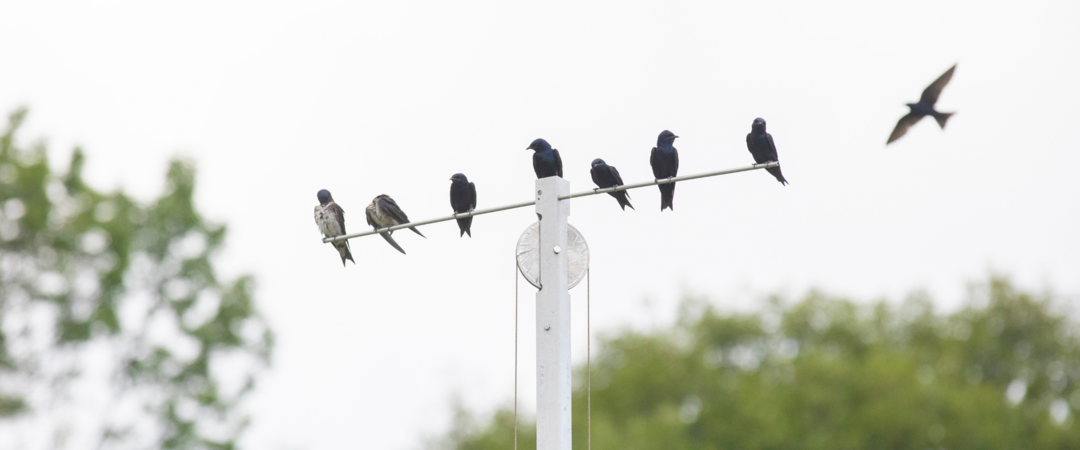When it comes to nesting, Purple Martins in eastern North America are pretty unique. Of the over 2,000 species of birds that reside in North America, they are one of three that have entirely changed the way they nest over time. Where once they nested in naturally-occuring cavities like old woodpecker holes, they now almost exclusively rely on human-made structures to form their nesting colonies and raise their young each spring and summer.
This March, the Bent of the River Audubon Center’s North Meadow became a new site for one of these interesting structures. This “gourd array” looks like what its name would have you expect: twelve white, butternut squash-shaped nesting boxes suspended over 10 feet into the air atop a metal pole.
A similar structure can be found at Marvelwood School in Kent, CT, where Master Bander and Board Member for the Purple Martin Conservation Association Laurie Doss and her students and Kent Land Trust Interns manage a Purple Martin colony. Part of that work involves banding the birds, which the Bent’s Junior Forest Technicians (JFTs) help out with each year.
“We were so inspired by their work, we wanted to put more effort into attracting our very own colony at the Bent,” says Glen Somogie, JFT program director.
The process of getting from inspiration to installation started last spring, and has involved an incredible number of dedicated staff, volunteers, and students alike, along with generous funding from the Jeniam Foundation. From choosing the right site to ordering the correct equipment to installing the structure itself, it is thanks to collaboration that this dream of having a colony at the Bent is on its way to becoming a reality.
Attracting a colony can take many years. As colony nesters, they prefer to nest in places where other Purple Martins are present. To attract these birds to this new structure, the JFTs made the nests appear lived in by putting dry pine needles and mud in and on the gourds. A decoy bird—which you can see in the lower right gourd in the photo at the top of the article—can also help encourage a colony to form. Once they have a colony, Glen and the JFTs hope to work with Laurie Doss to start a banding program with the Bent’s birds.

“The Junior Forest Technicans and I are so grateful to have the ability to partner with Laurie and her students at Marvelwood School," says Somogie. "They have been incredibly willing to share their vast knowledge and work experiences with Purple Martins. The gourd install at the Bent would not have been possible without the help from Laurie and her team along with the amazing gift from Jeniam Foundation.”
Purple Martins are experiencing a population decline throughout the country, including in the east. Competition with aggressive, non-native cavity nesters like European Starlings is one cause for this decline. Another is climate change, which can cause unseasonable cold snaps that kill off the insects Purple Martins rely on for food. To prevent further decline, conservation work like putting up nest boxes is essential.
Having a colony at the Bent will be helpful for the birds and the community alike. In addition to supporting local conservation efforts for Purple Martin habitat and monitoring the species via banding efforts and potential future Motus tagging efforts, it will also provide new educational opportunities for the JFTs and Bent visitors.
"It was so impressive to see this project stewarded from inception to completion over the last year by Glen and our volunteers, and I am thrilled to have played a small role in the installation," says Robin Ladouceur, senior center manager at the Bent. "I am hopeful a lovely Purple Martin colony will soon make the gourd array it’s home!"

Purple Martins are on their way back to Connecticut this spring. Though these creatures of habit aren’t expected to flock to a new nesting site so soon, we’re looking forward to continuing this collaborative effort towards Purple Martin conservation at the Bent.






